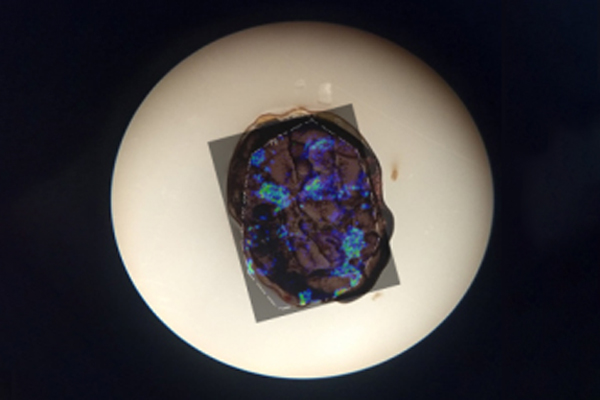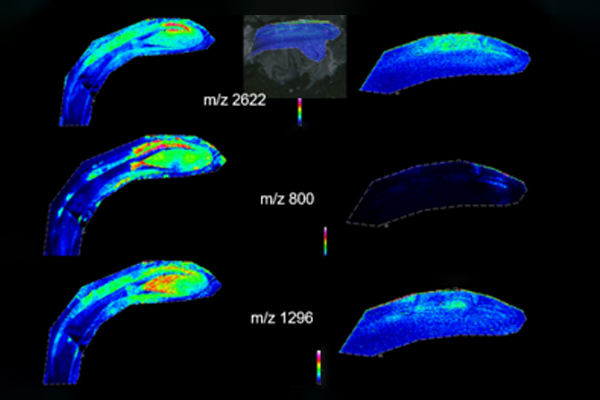
Alzheimer's Disease Research
Lead by postdoc Dr. Andrea Kelley, one of the lab's primary research goals is to develop new ways to analyze Alzheimer's disease pathologies and identify key biochemical areas which may help in future drug interventions. Alzheimer's disease (AD) is one of the most researched diseases in the world; however, so much is still unknown about the mechanisms of its onset and progression.
Our research focuses on the use of mass spectrometry, a powerful analytical technique, to develop a clearer picture of the mechanisms at work in the development of senile plaques in AD brains. Senile plaques are thought to be primarily made up of amyloid-betapeptides but our methods have confirmed that the plaques are actually much more complex than previously believed. With the application of imaging mass spectrometry, which combines the mass analysis of mass spectrometry and the visual of classic microscopy, we can begin to understand, at the molecular level, the underlying players in AD etiology and how the disease-state brain really differs from a normal brain.

Cattle Fever Tick Research
Lead by graduate student Grace Samenuk, this project's focus is to investigate the bioavailability of various avermectins and milbemycins in bovine serum after treatment. Cattle are treated with these avermectin and milbemycin compounds as an antiparasitic drug, specifically targeting cattle fever ticks (Rhipicephalus microplus and R. annulatus). The cattle fever ticks (CFTs) are invasive parasites that not only are a nuisance, they are vectors for the Babesia protozoan, which will cause the highly deadly bovine babesiosis in cattle. To combat the CTFs, cattle can either be given avermectins or milbemycins in a subcutaneously injected formulation, an oral injectable formulation, or a topical pour-on formulation. My goal is to quantify the bioavailability of these compounds over a specified period, using liquid chromatography-tandem mass spectrometry. This analytical method can achieve low part-per-billion sensitivity, while providing results with high accuracy.
The second specific aim of my project is to work towards a method of speciating the CFTs based on unique molecular biomarkers and to confirm the presence of the infectious protozoan carried inside of the CTFs. Additionally, a localized lipidomic profile of the CFTs at various depth points will be created.

MALDI Imaging for Dental Research
Lead by graduate student Madeline Colley, the collaboration with UTH Dental School and Dr.YHP Chun focuses on amelogenesis. There are still many questions unanswered about the proteins once they are secreted such as their post translational modifications, location and degradation products. Mass spectrometry (MS) with a focus on Mass Spectrometry Imaging (MSI) couples both spatial and sequence information of proteins in vivo and provides a deeper understanding of amelogenesis.
This study utilizes matrix-assisted laser-desorption ionization (MALDI) time-of-fight (TOF) MS to analyze formalin-fixed paraffin-embedded (FFPE) hemi-mandible incisor sections from wild type mice. A method to analyze the peptides on tissue was developed using a combination of deparaffinization, washes, antigen retrieval, trypsin deposition, matrix sublimation and rehydration is presented. Amelogenin and ameloblastin peptides were de novo sequenced and identified by MASCOT database analysis on tissue. Their location was determined through mass maps applied across the tissue. In addition, dentin matrix protein 3 was also identified and co-localized with the enamel forming proteins, adding another facet of the tooth formation process.

Noble Metal Nanoparticles
Lead by graduate student Fangzhi Yan, this project focuses on the synthesis and analysis of noble metal nanoparticles of varying sizes and charge states. He uses mass spectrometry, UVVis, Raman, and FTIR to analyze the characteristics of functionalized, spherical particles.

